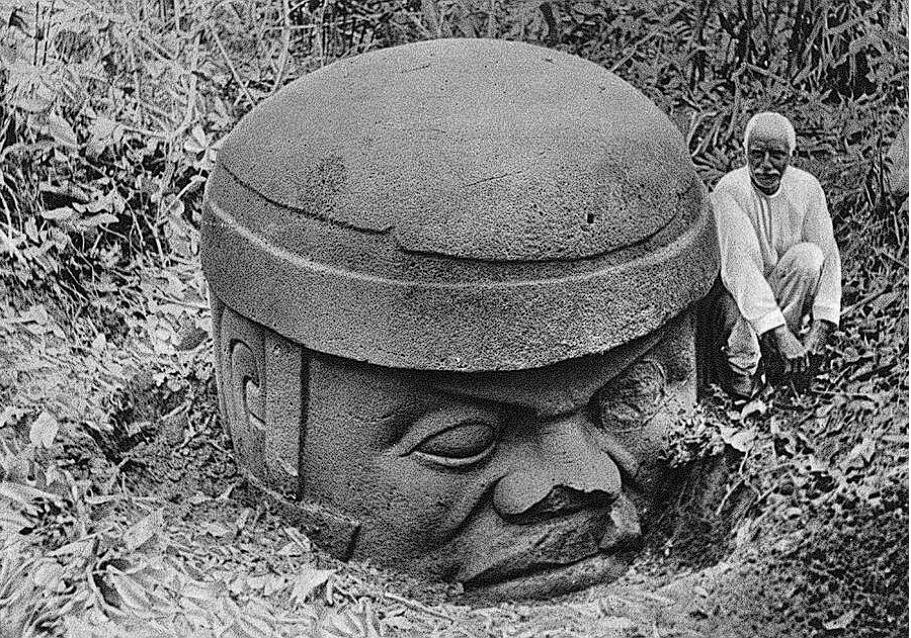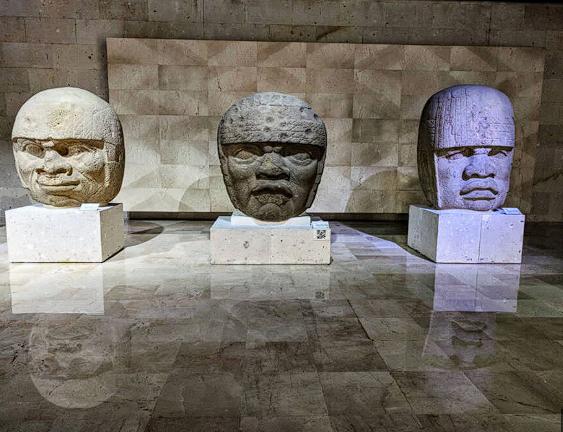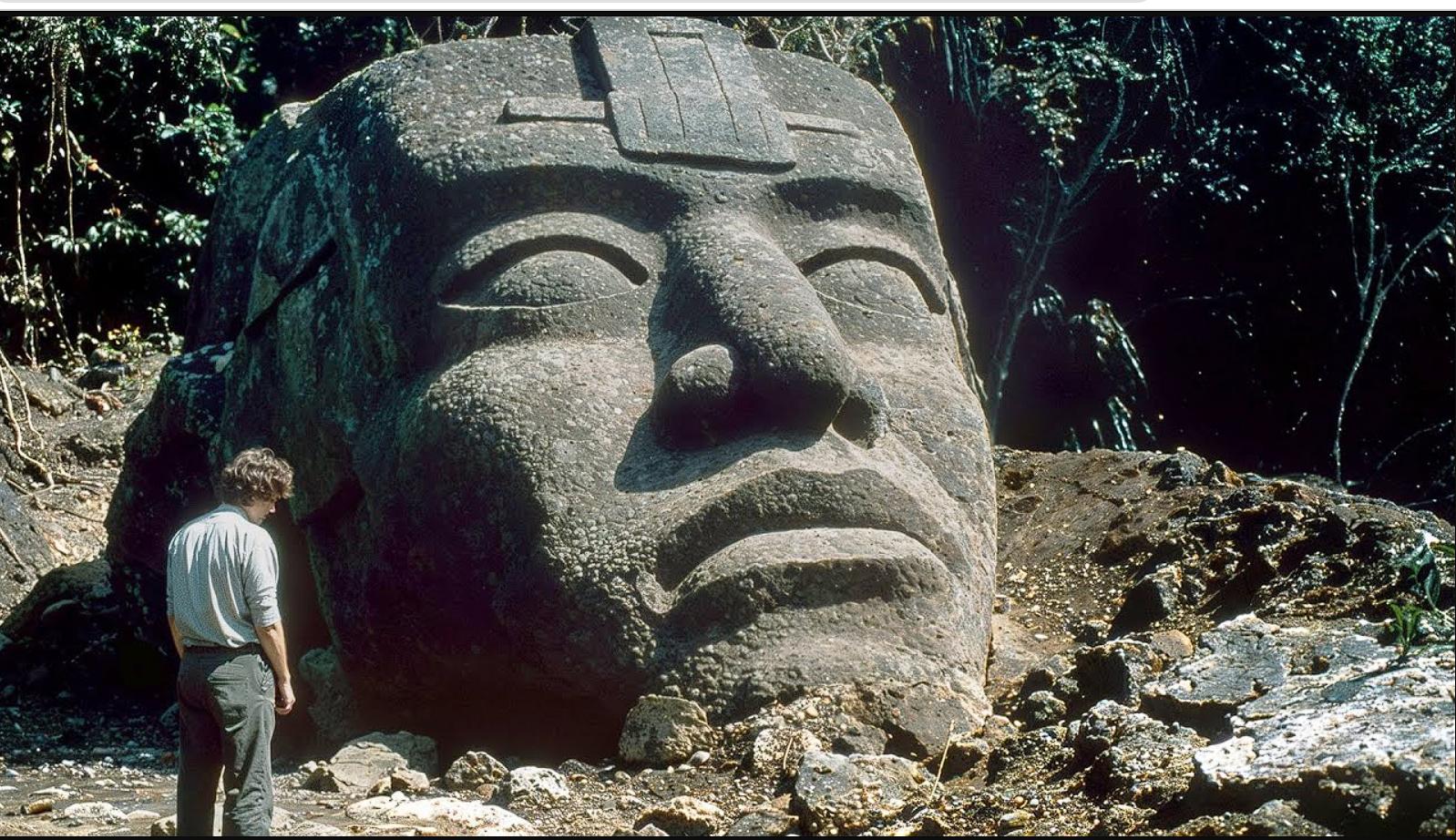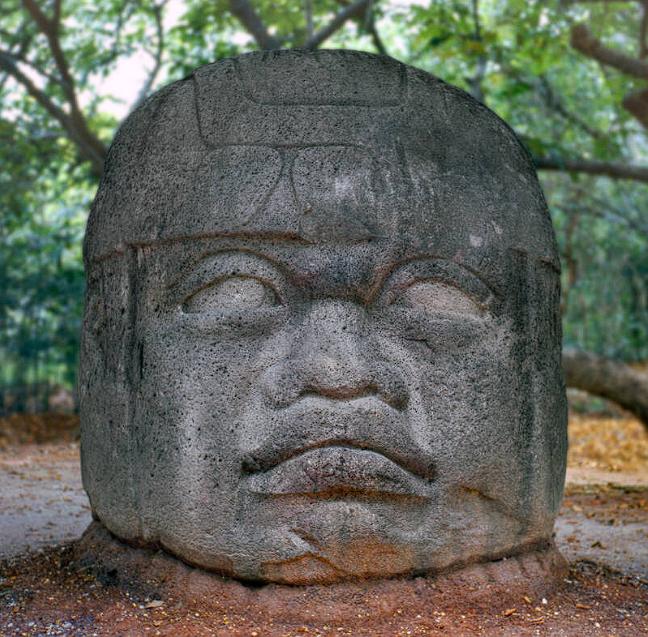The colossal Olmec heads, discovered in Mexico, are among the most intriguing and mysterious artifacts of ancient Mesoamerica. These massive stone sculptures, dating back approximately 3,400 years, have captivated researchers and the public alike.
Unveiling the Olmec Heads
The discovery and subsequent research on the Olmec heads have shed light on the sophisticated civilization that created them.
Discovery at Tres Zapotes
The initial discovery of an Olmec head in 1862 by José María Melgar y Serrano marked the beginning of a long journey to understand these monumental sculptures.

- Explorer’s Discovery:
- José María Melgar y Serrano’s discovery at Tres Zapotes was the first documented encounter with an Olmec head.
- This finding sparked curiosity and initiated further archaeological investigations in the region.
- Initial Recognition:
- The explorer’s observations highlighted the unique characteristics of the sculpture, leading to its recognition as a significant artifact.
- This discovery laid the groundwork for future studies on Olmec culture and art.
- Historical Context:
- The discovery occurred during a period of increasing interest in pre-Columbian civilizations, contributing to the broader understanding of Mesoamerican history.
- It provided a tangible connection to the ancient Olmecs.
Characteristics of the Heads
The Olmec heads share distinctive characteristics, including their colossal size, unique facial features, and the materials used in their construction.

- Colossal Size:
- The Olmec heads are renowned for their massive size, with some reaching heights of over three meters and weighing several tons.
- Their sheer scale reflects the engineering prowess and artistic ambitions of the Olmecs.
- Unique Facial Features:
- Each head exhibits unique facial features, suggesting they represent individual rulers or important figures.
- These features include distinct headdresses, expressions, and physical characteristics.
- Material and Construction:
- The heads are carved from basalt, a hard volcanic rock, transported from distant quarries.
- The intricate carvings and smooth surfaces demonstrate advanced stone-working techniques.
Interpretations and Theories
Scholars have proposed various interpretations and theories regarding the purpose and significance of the Olmec heads.

- Representation of Rulers:
- Many scholars believe the heads represent individual rulers or powerful leaders of the Olmec civilization.
- The unique facial features and headdresses support this interpretation.
- Intentional Burial:
- The fact that many heads appear to have been intentionally buried has led to theories about power transitions and ancestor worship.
- This practice may have symbolized the end of a ruler’s reign or a ritualistic act of veneration.
- Symbolic Significance:
- The heads may have served as symbolic representations of Olmec power and authority, reinforcing social hierarchy.
- Their placement and orientation within Olmec sites suggest a deliberate symbolic purpose.
The Olmec Legacy
The Olmec heads are a testament to the Olmec civilization’s artistic and cultural achievements, leaving a lasting legacy in Mesoamerican history.
Artistic Achievements
The Olmec heads showcase the advanced artistic skills and aesthetic sensibilities of the Olmec people.
- Master Stone Carvers:
- The Olmecs were master stone carvers, capable of creating monumental sculptures with intricate details.
- Their craftsmanship is evident in the smooth surfaces and precise carvings of the heads.
- Symbolic Art:
- The heads represent a form of symbolic art, conveying messages about power, authority, and cultural beliefs.
- Their artistic style influenced later Mesoamerican civilizations.
- Cultural Influence:
- Olmec art, including the colossal heads, influenced the development of art in subsequent Mesoamerican cultures.
- Their artistic legacy is evident in the art of the Maya and other civilizations.
Cultural Significance
The Olmec heads provide valuable insights into the cultural practices and beliefs of the Olmec civilization.

- Ancestor Worship:
- The intentional burial of the heads suggests a form of ancestor worship or veneration.
- This practice reflects the Olmecs’ reverence for their leaders and ancestors.
- Power Dynamics:
- The heads may have played a role in Olmec power dynamics, symbolizing shifts in leadership and authority.
- Their placement and treatment reflect the social and political structures of the time.
- Religious Beliefs:
- The heads may have been associated with Olmec religious beliefs and rituals, serving as sacred objects.
- Their symbolic significance likely extended beyond mere representation of rulers.
Archaeological Importance
The Olmec heads are crucial archaeological artifacts, contributing to our understanding of Mesoamerican prehistory.
- Understanding Olmec Civilization:
- The heads provide valuable information about the Olmecs’ social organization, artistic skills, and cultural practices.
- They are essential for reconstructing the history of this influential civilization.
- Chronological Markers:
- The heads serve as chronological markers, helping archaeologists date Olmec sites and artifacts.
- Their stylistic variations provide insights into the evolution of Olmec art.
- Preservation Efforts:
- Ongoing preservation efforts ensure that the Olmec heads are protected for future generations to study and appreciate.
- These efforts contribute to the preservation of Mesoamerican cultural heritage.
The Olmec heads stand as a testament to the artistic and cultural achievements of the Olmec civilization, leaving a lasting legacy in Mesoamerican history. Their discovery and ongoing study continue to provide valuable insights into the ancient world.
